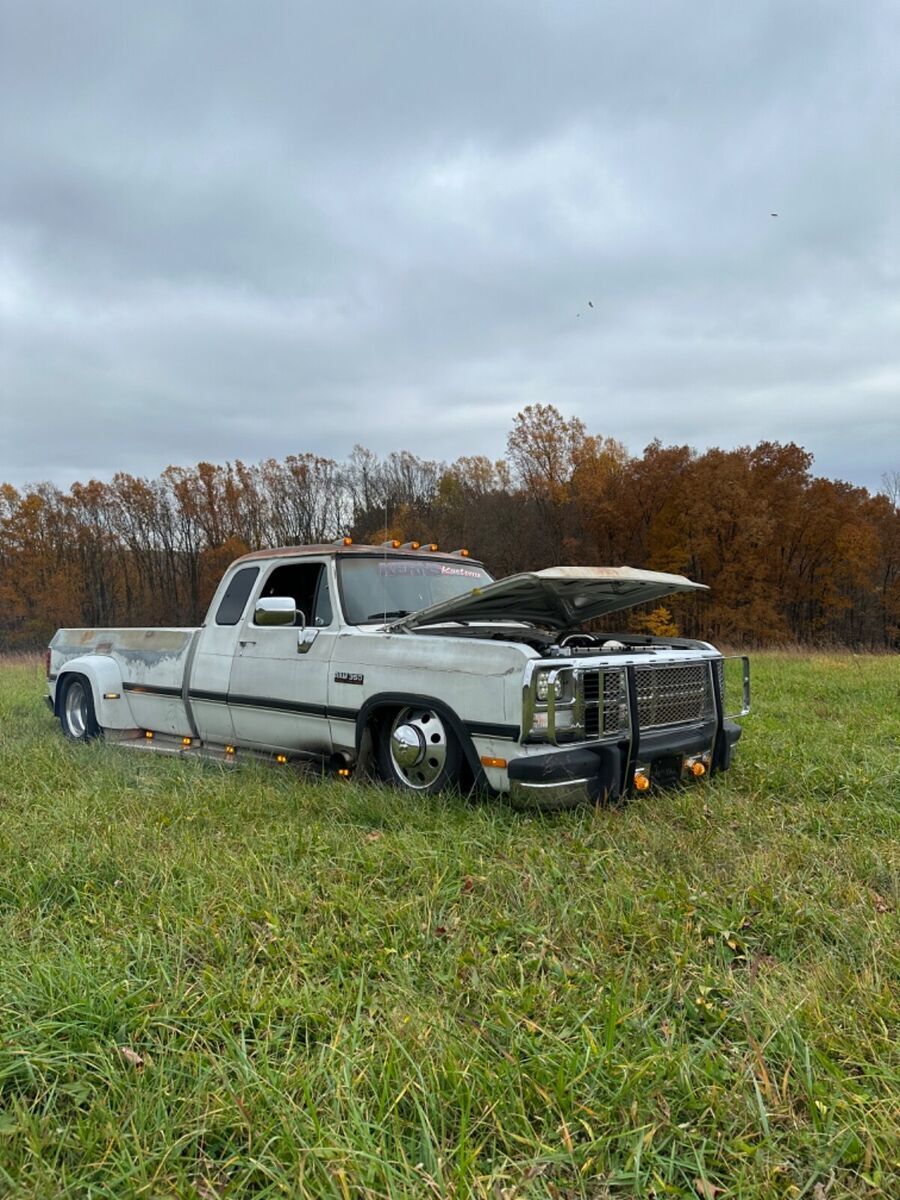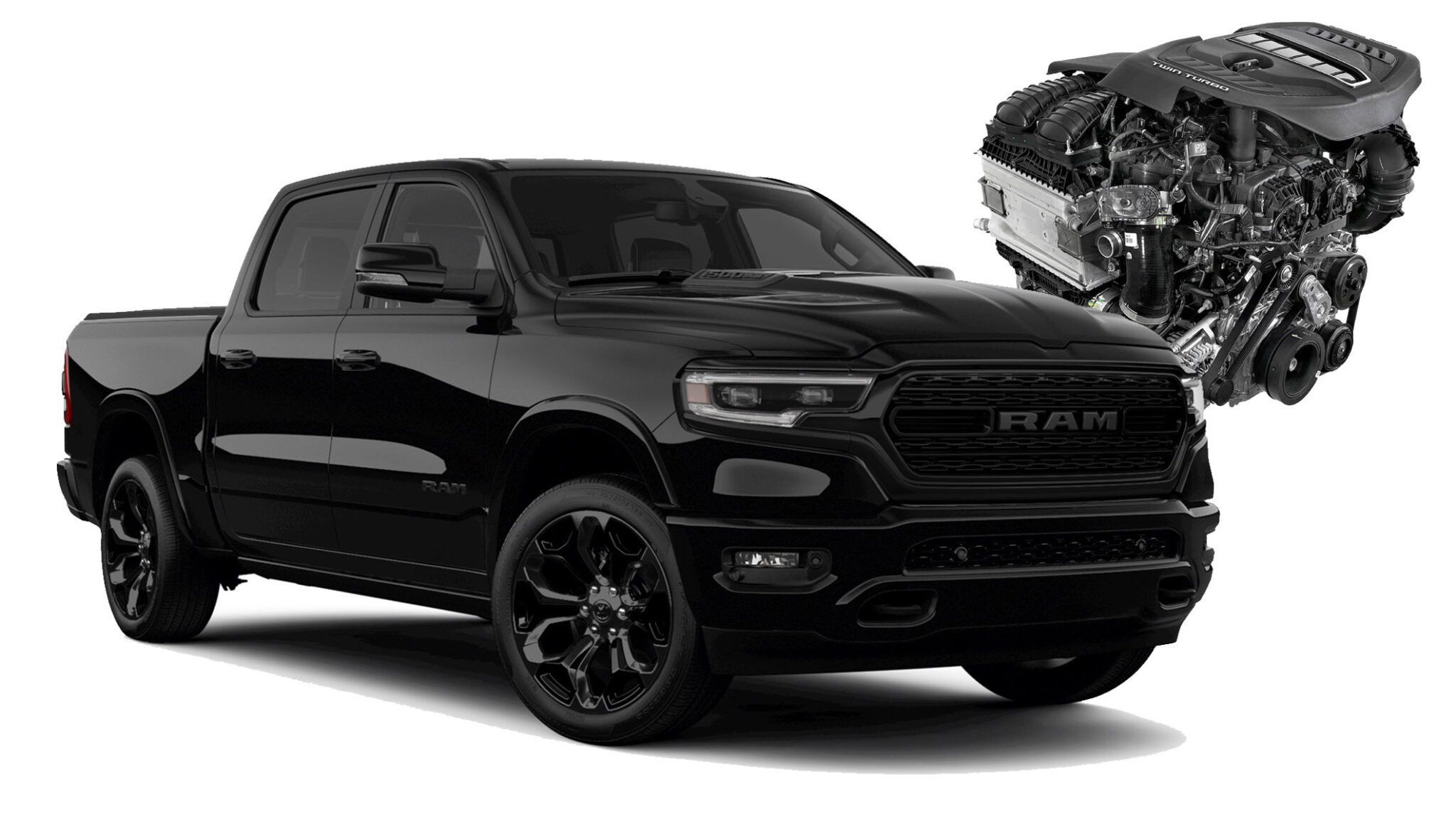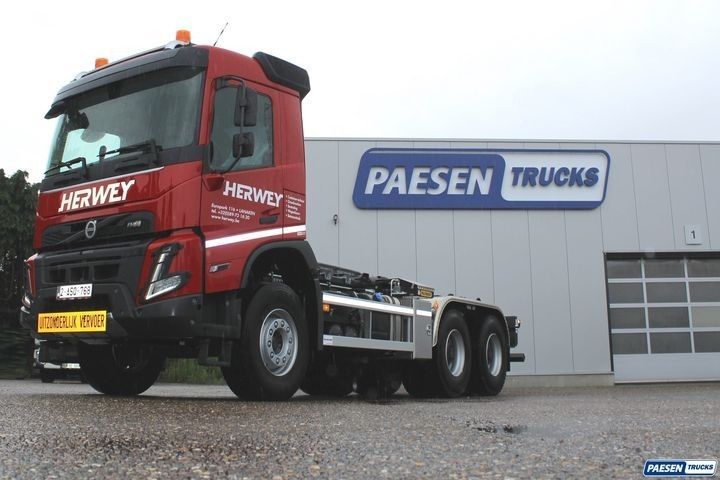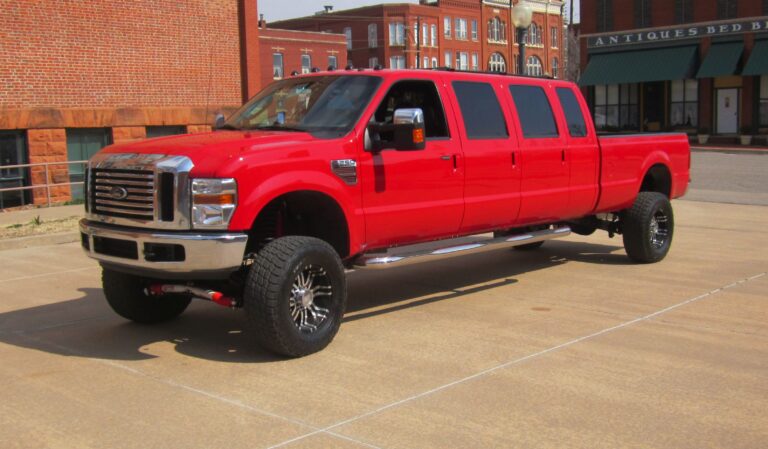350 Dodge Trucks For Sale: Your Comprehensive Guide to Finding and Owning a Legend
350 Dodge Trucks For Sale: Your Comprehensive Guide to Finding and Owning a Legend cars.truckstrend.com
The rumble of a vintage V8 or the unmistakable clatter of an early Cummins diesel—there’s something undeniably appealing about a classic Dodge truck. Among the most sought-after models for their sheer utility, robust build, and timeless appeal are the "350 Dodge Trucks." This designation typically refers to the heavy-duty D-series (2WD) and W-series (4WD) models, particularly the D350 and W350 from the late 1970s through the early 1990s. These trucks weren’t just vehicles; they were workhorses, family haulers, and symbols of American resilience.
If you’re in the market for a dependable, no-nonsense truck with a strong dose of character, a 350 Dodge truck might be your perfect match. This comprehensive guide will delve into what makes these trucks so special, what to look for when buying, and how to navigate the exciting world of classic Dodge ownership.
350 Dodge Trucks For Sale: Your Comprehensive Guide to Finding and Owning a Legend
The Enduring Legacy of the Dodge D/W-Series 350
The Dodge D/W-series trucks, which eventually evolved into the Ram line, were built to conquer. The 350 (or later, 3500) designation signifies their one-ton, heavy-duty capacity, designed for serious hauling and towing. From their inception, these trucks were engineered with ruggedness in mind: thick steel frames, heavy-duty axles, and a range of powertrain options that emphasized torque and longevity.
Early models featured classic Mopar V8 engines like the 318, 360, and even the larger 400 and 440 cubic inch powerhouses, alongside the legendary Slant-6 for those prioritizing economy and durability. However, the game-changer arrived in 1989 with the introduction of the 5.9-liter 12-valve Cummins turbodiesel engine. This partnership transformed the D350 and W350 into legendary status, offering unparalleled torque, fuel efficiency (for its time), and an almost mythical reputation for million-mile durability.
These trucks represent a golden age of simplicity and mechanical robustness. They were built before the widespread integration of complex electronics, making them more straightforward to diagnose, repair, and maintain for the average enthusiast or mechanic. Their straightforward design and heavy-duty components ensure that many examples, even decades later, are still hauling and working hard across the country.
Why Buy a 350 Dodge Truck Today?
The appeal of a 350 Dodge truck extends far beyond nostalgia. Here are compelling reasons why these vintage beasts remain a smart acquisition:
- Unrivaled Workhorse Capabilities: These trucks were born to work. With their heavy-duty suspensions and powerful engines (especially the Cummins), they excel at towing large trailers, hauling heavy loads, and tackling demanding tasks that might strain a newer, lighter-duty truck.
- Classic Appeal & Collectibility: There’s an undeniable cool factor to these trucks. Their boxy, utilitarian design is a testament to an era when form truly followed function. Well-preserved examples, especially those with the Cummins engine, are increasingly sought after by collectors and enthusiasts, appreciating in value.
- Simplicity & Maintainability: Compared to modern trucks laden with intricate computer systems and sensors, 350 Dodge trucks are remarkably simple. This makes them ideal for DIY mechanics, reducing labor costs and making troubleshooting much easier. Parts for common wear items are generally readily available through aftermarket suppliers.
- Value Proposition: For the utility they offer, many 350 Dodge trucks can be acquired for significantly less than a comparable new truck. While some highly sought-after, pristine Cummins models command a premium, there are still many affordable options that offer excellent bang for your buck as a work vehicle or project.
- The Cummins Diesel Advantage: The 1st Gen Cummins-powered D350/W350 models (1989-1993) are legends for a reason. Their mechanical injection systems, robust construction, and impressive torque output make them incredibly durable and capable. Many owners prefer the simplicity and reliability of these early diesels over their more modern, electronically controlled counterparts.


Key Considerations When Searching for a 350 Dodge Truck
Finding the right 350 Dodge truck requires patience and a keen eye. Here are critical areas to inspect:
- Rust: This is the primary enemy of vintage vehicles. Thoroughly check:
- Cab corners, rocker panels, and door bottoms: Common rust traps.
- Fender wells and bed sides: Especially around wheel arches.
- Frame: Look for excessive surface rust or, worse, rot that compromises structural integrity. Pay attention to spring hangers and body mounts.
- Floor pans: Check under the carpet for perforations.

- Engine & Drivetrain:
- Gas Engines: Listen for knocks, excessive smoke (blue for oil, black for rich), and check for oil leaks. Ensure good oil pressure.
- Cummins Diesel: Listen for smooth idle, check for excessive black or white smoke (a little black under load is normal). Inspect for fuel leaks around the injection pump and lines. Check for the infamous "Killer Dowel Pin (KDP)" fix (more on this in the FAQ). Check turbo for excessive shaft play.
- Transmission: Manual transmissions should shift smoothly without grinding. Automatics should engage gears without harshness or slipping. Check fluid levels and condition.
- Differentials & Transfer Case (4×4): Check for leaks and unusual noises during a test drive.
- Suspension & Steering:
- Look for worn ball joints, tie rods, and steering box play. Excessive slop in the steering wheel is a common issue.
- Check leaf springs for broken leaves or excessive sag.
- Inspect shock absorbers for leaks.
- Brakes: Check the master cylinder for leaks, and inspect brake lines for rust or damage. Ensure the pedal feels firm and the truck stops straight.
- Electrical System: Test all lights, gauges, wipers, and the heater/AC. Old wiring can be brittle and prone to issues.
- Interior Condition: While often rough, ensure the dash isn’t completely cracked (common), seats aren’t completely torn down to the springs, and basic controls function.
- Documentation: Always ask for a clear title and any available maintenance records.
Where to Find 350 Dodge Trucks For Sale
The search for your ideal 350 Dodge truck can be an adventure in itself:
- Online Marketplaces: Craigslist, Facebook Marketplace, and eBay are popular starting points. Use specific search terms like "Dodge D350," "Dodge W350," "1st Gen Cummins," or "Ram 350."
- Specialized Forums & Websites: Dedicated Dodge truck forums (e.g., Turbo Diesel Register, Dodge Ram Forum) often have "for sale" sections where enthusiasts list their trucks. Websites like ClassicCars.com or Hemmings also feature vintage trucks.
- Local Classifieds & Word-of-Mouth: Sometimes the best deals are found locally. Check community newspapers or ask around at local auto shops and farm supply stores.
- Auctions: Classic car auctions or even local farm auctions can sometimes yield hidden gems, but be prepared to make quick decisions and inspect thoroughly beforehand.
- Specialty Dealerships: Some dealerships specialize in classic or used heavy-duty trucks, offering a more curated selection, though often at a higher price point.
Navigating the Purchase Process
Once you’ve found a potential candidate, follow these steps:
- Set a Realistic Budget: Beyond the purchase price, factor in potential repair costs, insurance, registration, and any planned upgrades or restoration work.
- Thorough Inspection: Never buy sight unseen. If you’re not mechanically inclined, bring a knowledgeable friend or, better yet, a trusted mechanic specializing in older trucks.
- Test Drive: Drive the truck cold and hot. Pay attention to how it starts, shifts, brakes, and handles. Listen for unusual noises from the engine, transmission, differentials, and suspension.
- Negotiation: Don’t be afraid to negotiate the price, especially if you’ve identified issues during your inspection.
- Title Transfer & Registration: Understand your local Department of Motor Vehicles (DMV) requirements for transferring titles and registering older vehicles.
Restoration vs. Work Truck: Making Your Choice
Before you buy, decide on your primary purpose for the truck:
- Full Restoration Project: If you dream of a show-quality classic, be prepared for a significant investment in time, money, and parts. You’ll likely seek out the most original and complete examples, even if they’re not running perfectly.
- Dependable Work Truck: If utility is your main goal, focus on mechanical soundness. A truck with cosmetic imperfections but a strong engine, transmission, and frame is a far better investment than a pretty truck with hidden mechanical gremlins.
- Daily Driver/Weekend Warrior: A balance of mechanical reliability and decent aesthetics. You might prioritize a running and driving truck that needs some cosmetic TLC and minor mechanical refresh.
Tips for Maintaining Your 350 Dodge Truck
Owning a vintage truck is a rewarding experience, but it requires ongoing care:
- Regular Maintenance: Adhere to a strict schedule for oil changes, fluid checks (transmission, differential, coolant), and filter replacements (oil, fuel, air).
- Grease Points: Many older trucks have numerous grease zerks on suspension and steering components. Keep them lubricated.
- Address Issues Promptly: Don’t ignore strange noises, leaks, or warning lights. Small problems can quickly escalate.
- Rust Prevention: Wash your truck regularly, especially after driving on salted roads. Address any new rust spots with conversion and paint.
- Join a Community: Online forums and local classic truck clubs are invaluable resources for advice, parts sourcing, and camaraderie.
Sample Price Guide: 350 Dodge Trucks For Sale (Estimates Only)
Prices for 350 Dodge Trucks can vary wildly based on year, engine (gas vs. Cummins), 2WD/4WD, transmission, condition, location, and market demand. This table provides general estimates and should be used as a guideline, not a definitive price list.
| Condition Category | Engine Type | Estimated Price Range (USD) | Key Features/Notes |
|---|---|---|---|
| Poor / Parts Truck | Gas / Diesel | $500 – $3,000 | Non-running, significant rust, major mechanical issues, incomplete. Best for parts donor or very ambitious restoration. |
| Fair / Driver Project | Gas | $2,500 – $8,000 | Runs and drives, but needs significant mechanical or cosmetic work. Visible rust, worn interior, minor leaks. Could be a decent work truck with investment. |
| Diesel (Cummins) | $4,000 – $12,000 | Runs and drives, but needs work. Cummins engine adds value, even with issues. Expect significant body rust or interior wear. | |
| Good / Solid Workhorse | Gas | $7,000 – $15,000 | Solid running condition, minimal frame rust, minor body rust, functional interior. Suitable as a reliable daily driver or work truck with regular maintenance. |
| Diesel (Cummins) | $12,000 – $25,000 | Strong running Cummins, good transmission, minimal frame rust. Some cosmetic flaws but generally solid. High demand, especially for 4×4. | |
| Excellent / Restored | Gas | $15,000 – $30,000+ | Fully restored or exceptionally well-preserved original. Near-show quality paint, clean interior, mechanically sound. Rare for gas models. |
| Diesel (Cummins) | $25,000 – $60,000+ | Meticulously restored or very low mileage, pristine original. Cummins engine, often with KDP fix done. Highly sought-after collector’s items, especially 1989-1993 4×4 models. |
Disclaimer: These are broad estimates. A rare configuration, specific modifications, or unique history can significantly impact the actual selling price. Always perform a thorough inspection and market research for your specific region.
Frequently Asked Questions (FAQ) About 350 Dodge Trucks For Sale
Q1: What years are typically considered "350 Dodge Trucks" in the context of classic appeal?
A1: While the "350" designation broadly refers to one-ton Dodge trucks, enthusiasts often focus on the D/W-series from the late 1970s through the 1993 model year. The 1981-1993 "First Generation" Ram trucks (often still called D/W-series by many) are particularly popular, especially those from 1989-1993 with the Cummins diesel engine.
Q2: What’s the difference between a D350 and a W350?
A2: The "D" in D350 signifies a 2-wheel-drive (2WD) truck, while the "W" in W350 indicates a 4-wheel-drive (4WD) model. W350s typically command higher prices due to their off-road capability and versatility.
Q3: Are parts hard to find for these older Dodge trucks?
A3: For common wear items, mechanical components, and engine parts (especially for the Cummins), parts are generally readily available through aftermarket suppliers, online retailers, and specialized classic truck parts vendors. Body panels and specific trim pieces can be harder to find in good condition, often requiring searching salvage yards or specialized reproduction companies.
Q4: What is the "Killer Dowel Pin (KDP)" issue in the Cummins engine, and should I be worried?
A4: The KDP is a small steel dowel pin used during engine assembly in the 12-valve 5.9L Cummins engine (1989-1998). Over time, vibration can cause this pin to back out of its bore. If it falls out, it can cause catastrophic engine damage (e.g., breaking the timing gear housing, damaging gears). It’s a well-known issue with a simple, relatively inexpensive fix. If you’re buying a Cummins-powered truck, it’s highly recommended to verify if the KDP has been "fixed" or "tabbed" by a previous owner. If not, it should be a priority fix.
Q5: Can these trucks be reliable daily drivers?
A5: Absolutely, with proper maintenance and addressing any pre-existing issues. Many owners use their 350 Dodge trucks as daily drivers. However, be aware that fuel economy (especially with gas engines) will not compare to modern vehicles, and the ride quality is typically stiffer and less refined.
Q6: What’s a reasonable mileage for a used 350 Dodge, particularly one with a Cummins?
A6: Unlike modern vehicles, high mileage isn’t always a deal-breaker for these trucks, especially for the Cummins diesel. It’s common to find Cummins engines with 300,000 to 500,000 miles that are still running strong, provided they’ve been well-maintained. A truck with lower mileage might suggest less wear, but it’s more about consistent maintenance than just the number on the odometer. For gas engines, anything over 150,000-200,000 miles might suggest a rebuild is approaching, though some can go much further.
Conclusion
The 350 Dodge truck, whether it’s a gas-powered D350 or a legendary Cummins-equipped W350, represents a unique blend of rugged utility, classic style, and mechanical simplicity. These trucks are more than just vehicles; they are enduring symbols of a bygone era of American automotive engineering, built to last and to work.
Embarking on the journey to find and own one of these magnificent machines can be incredibly rewarding. With careful research, a thorough inspection, and a commitment to ongoing maintenance, you can acquire a truck that not only serves your practical needs but also connects you to a rich history of power and dependability. The open road, a heavy load, and the unmistakable roar of a 350 Dodge await.






